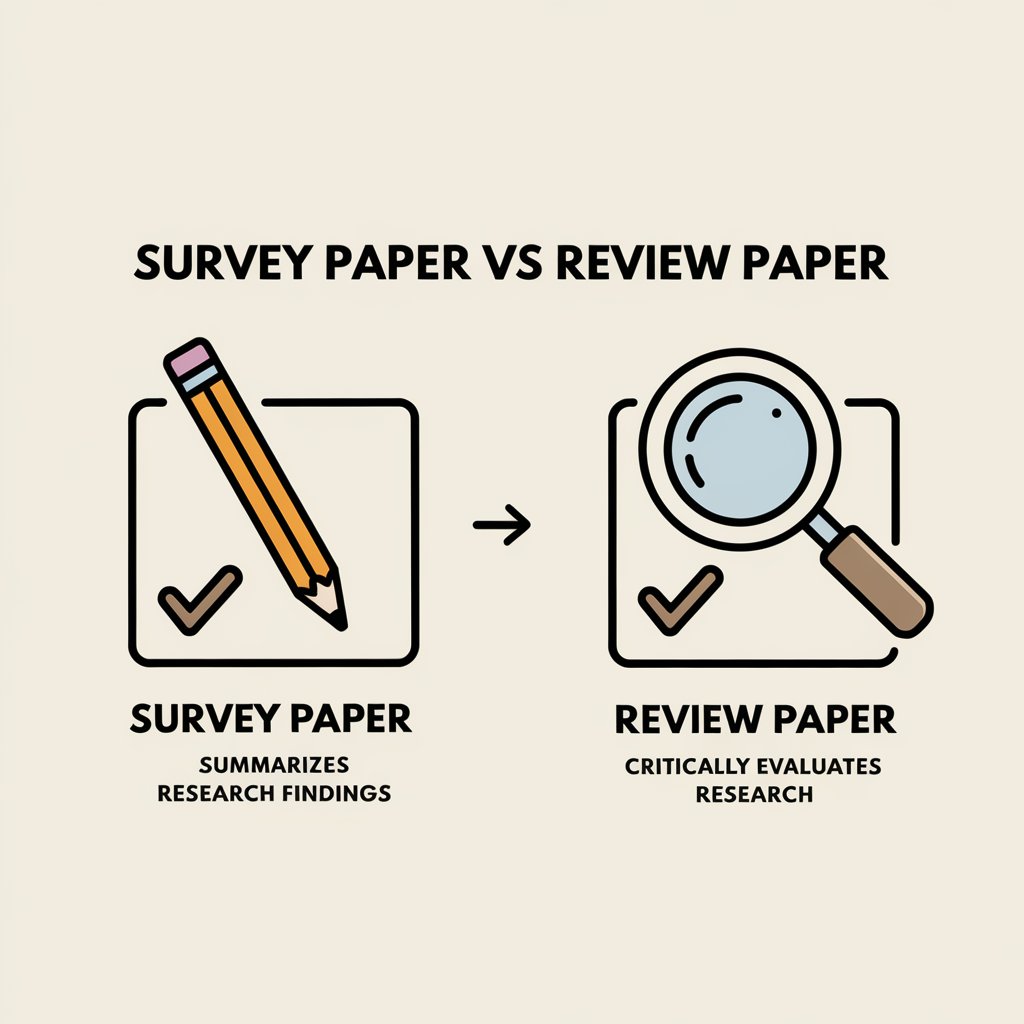Survey papers and review papers are two terms that often confuse, especially for students, researchers, and early-career academics. At first glance, they might seem interchangeable, as both involve summarizing existing literature. But dig a little deeper, and you’ll discover that each serves a unique purpose, follows a distinct structure, and caters to different academic goals.
Understanding the difference between a survey and a review paper is crucial for writing one effectively and choosing the right type for your research needs. Let’s break down the core distinctions between the two, explore their objectives, and provide tips on when and why you should use each, whether planning your next paper or just looking to sharpen your academic skills.
What is a Survey Paper
A survey paper is an academic writing that comprehensively overviews existing research on a specific topic or field. Its main goal is to collect, summarize, and organize a large body of literature to help readers understand the current state of research. Unlike original research papers, survey papers do not present new experiments or findings; instead, they highlight key trends, standard methodologies, significant contributions, and gaps in the literature. They are especially useful for researchers new to a field, as they offer a structured summary of what has been done and suggest possible directions for future work.
What is a Review Paper
A review paper is an academic article that critically analyzes and synthesizes existing research on a particular topic. Unlike a survey paper, which focuses on summarizing studies, a review paper goes a step further by evaluating the quality, relevance, and impact of the research it discusses. It aims to identify patterns, contradictions, strengths, and weaknesses within the literature, often presenting a well-argued perspective or interpretation. Review papers help readers understand the broader implications of past studies, resolve conflicting findings, and highlight areas that require further investigation. They are valuable for advancing theoretical understanding and guiding future research.

Differences Between a Survey Paper and a Review Paper
Although both survey and review papers aim to summarize existing research, they differ in focus, depth, and purpose. Here’s how:
1. Purpose
-
Survey Paper: This type of paper provides a comprehensive overview of research on a specific topic or field, highlighting trends, methods, and future directions.
-
Review Paper: Offers a critical evaluation of existing literature, analyzing and comparing findings to present an interpretation or argument.
2. Focus
3. Structure
-
Survey Paper: Typically organized by themes, methodologies, or chronology, with detailed study summaries.
-
Review Paper: More argumentative or analytical, often structured around debates, controversies, or research questions.
4. Use Case
-
Survey Paper: Ideal for researchers new to a field or those looking to understand current progress and research directions.
-
Review Paper: Useful for understanding conflicting findings, theoretical development, or gaps in knowledge.
|
Survey Paper |
Review Paper |
| Definition |
An academic paper that systematically collects, organizes, and presents research on a specific topic without deep critical analysis. |
A scholarly article that critically analyzes and synthesizes existing research, often forming an argument or interpretation. |
| Purpose |
Provides a comprehensive overview of research on a specific topic or field, highlighting trends, methods, and future directions. |
Offers a critical evaluation of existing literature, analyzing and comparing findings to present an interpretation or argument. |
| Focus |
Collects and categorizes studies to identify patterns or gaps. |
Evaluates and synthesizes key works to provide insight and critique. |
| Structure |
Organized by themes, methodologies, or chronology, with detailed summaries of each study. |
More argumentative or analytical, often structured around debates, controversies, or research questions. |
| Use Case |
Ideal for researchers new to a field or those seeking to understand current progress and research directions. |
Helpful in understanding conflicting findings, theoretical development, or gaps in knowledge. |
| Normal Length |
Typically ranges from 6,000 to 10,000 words, depending on the scope of the topic. |
Usually between 5,000 and 8,000 words, though it can vary based on the depth of analysis. |
Read on: Difference between a research paper and a review paper
Conclusion
While survey and review papers may appear similar at first glance, understanding their fundamental differences is essential for any academic writer or researcher. A survey paper serves as a structured map of existing research, guiding readers through significant contributions and current trends in a field. In contrast, a review paper offers deeper insight by critically evaluating and interpreting the literature to uncover underlying patterns, contradictions, and theoretical implications.
Choosing the correct type of paper depends on your research goals, whether you aim to provide a broad overview or build a critical argument. By mastering the distinctions between these two forms, you’ll improve your academic writing and contribute more effectively to scholarly conversations within your field.









 Evan John
Evan John